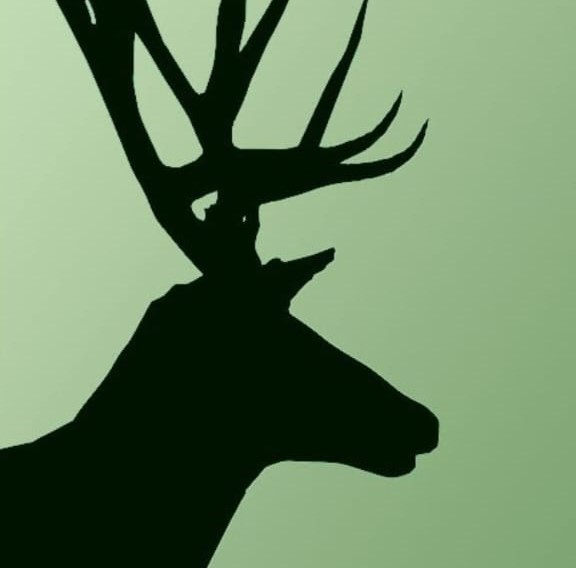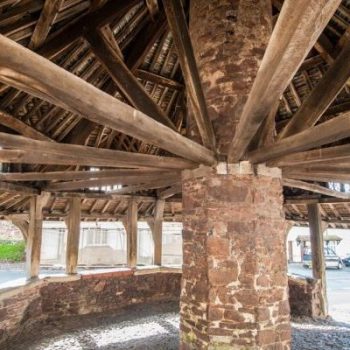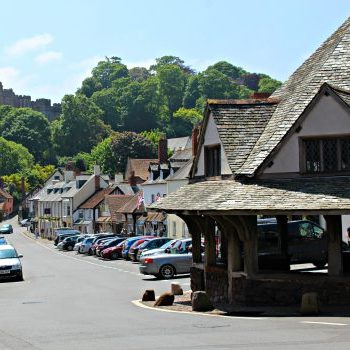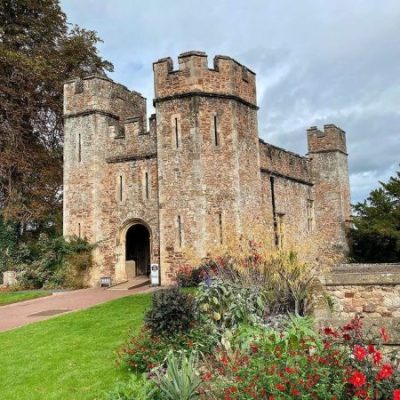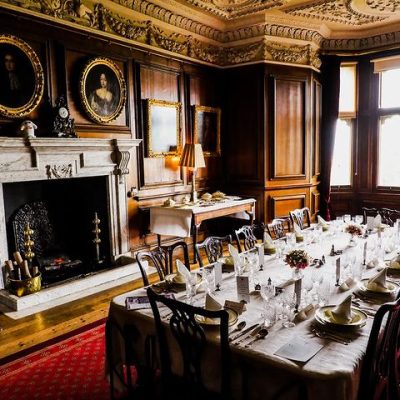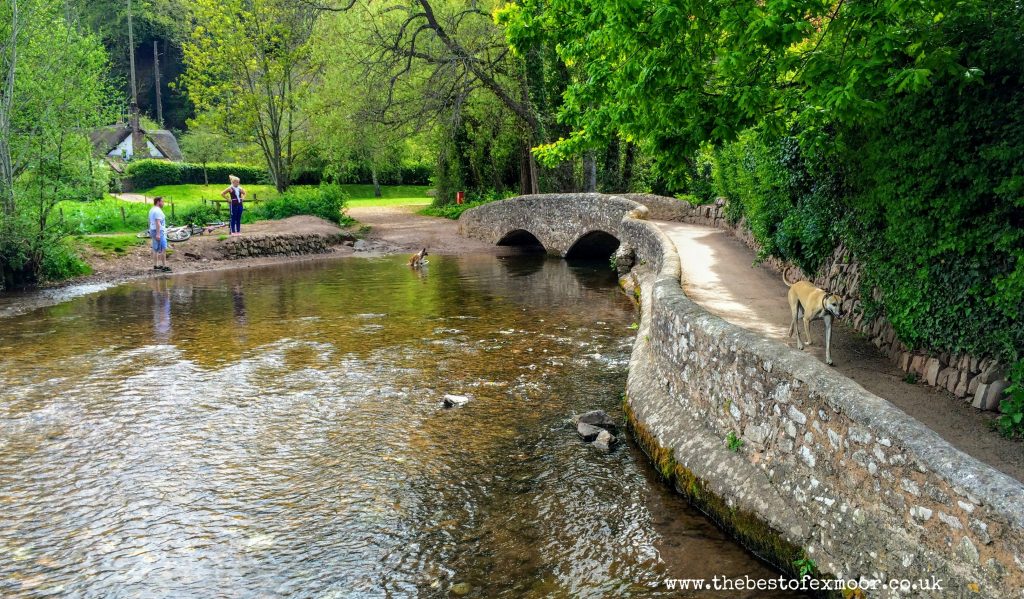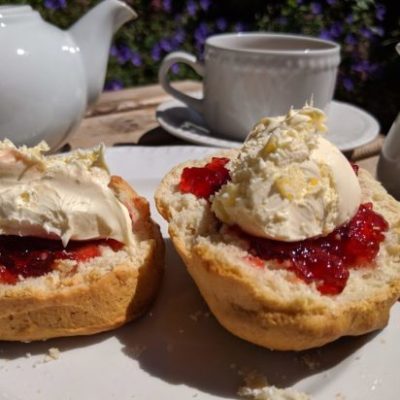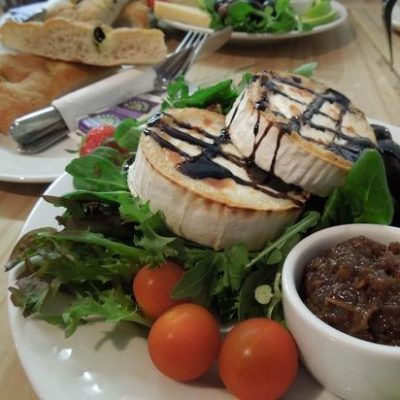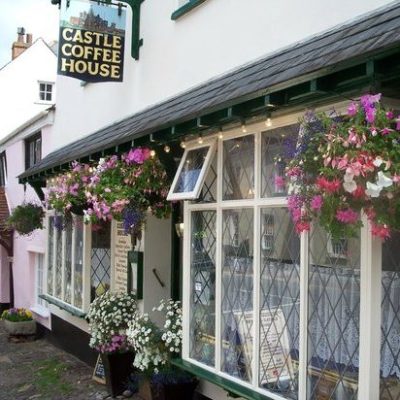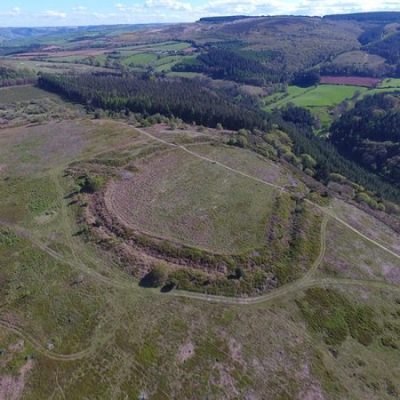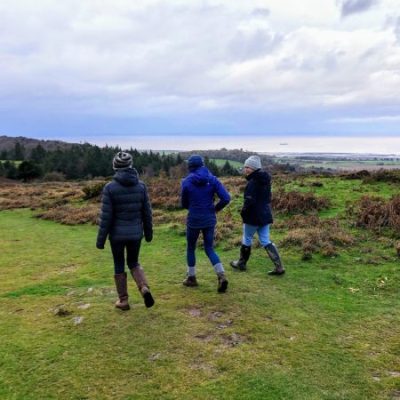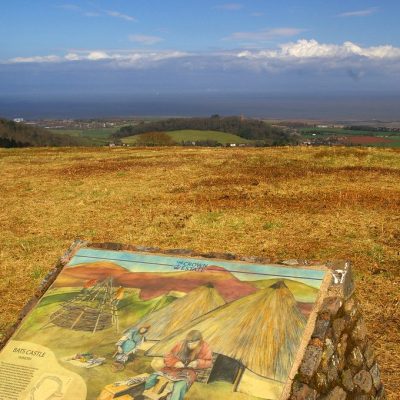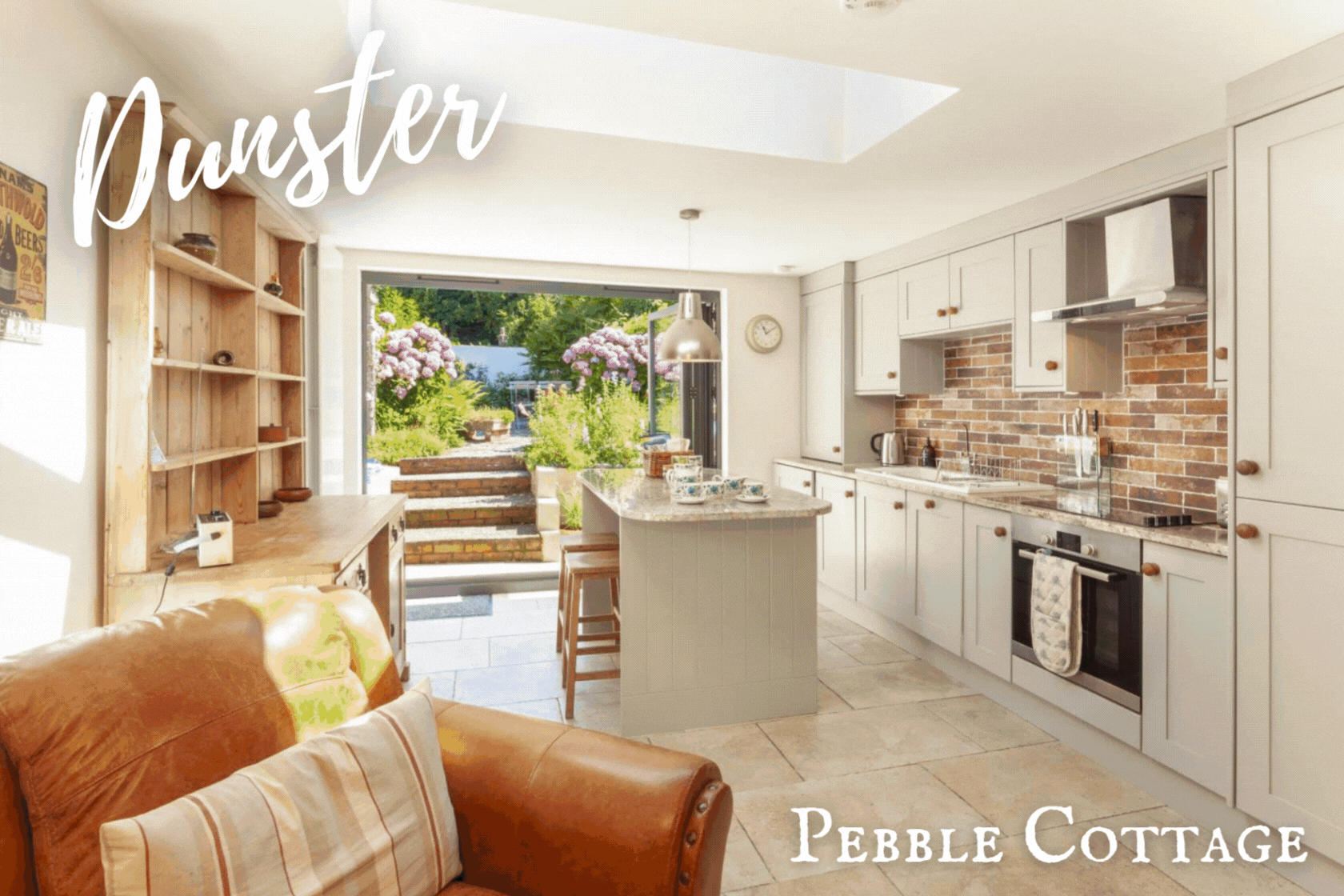Dunster: A Village Guide
Dunster is one of Exmoor’s most picturesque villages, where medieval history meets charming shops, tea rooms, and stunning scenery. Whether you’re visiting for the day or staying longer, this guide will help you make the most of your trip.
Dunster is among the best-preserved medieval villages in England. The Yarn Market, a 17th-century octagonal shelter once used for wool trading, still stands proudly on the high street. Dunster Castle, dating back to Norman times, dominates the village skyline and has been home to the Luttrell family for centuries. Nearby you’ll also find remains of the Benedictine priory, the Dovecote, and the Tithe Barn — all reminders of Dunster’s rich past.
Things to See and Do
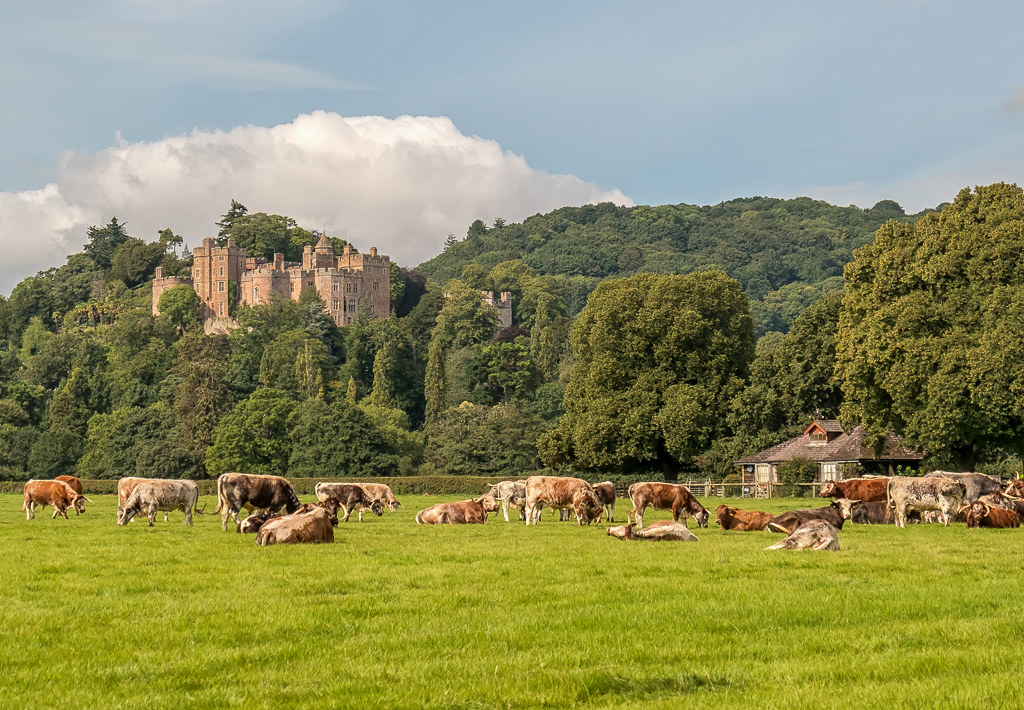
-
Dunster Castle, Watermill and Gardens – A must-visit National Trust property with dramatic history and sweeping views.
- The Yarn Market – Step inside this historic trading shelter and imagine Dunster in its wool-trading heyday.
- Gallox Bridge – A picture-perfect medieval packhorse bridge at the edge of the village.
Eating and Drinking
Dunster is full of cosy cafés and inviting tea rooms. Enjoy a traditional cream tea at Tessa’s Tea Shop or Locks Tea Room, or head to Cobblestones Café for lunch in their pretty garden. For dining out, Hathaway’s and Reeves restaurant offers fine dining with local flair, while the Luttrell Arms and Stags Head provide hearty pub meals.
Walks and Outdoors
Dunster is perfectly placed for exploring Exmoor’s landscapes. Stroll from Gallox Bridge into the Deer Park for open views, or climb Grabbist Hill for a rewarding panorama across the Bristol Channel. Dunster Beach is just a short walk away, with its wide stretch of sand and shingle leading all the way to Minehead.
Follow this link for a 4.3mile circular walk from Dunster
Shopping
Browse a collection of independent shops ranging from traditional sweet shops and local art galleries to rustic homewares and gifts. It’s the perfect place to pick up a memento of your Exmoor stay.
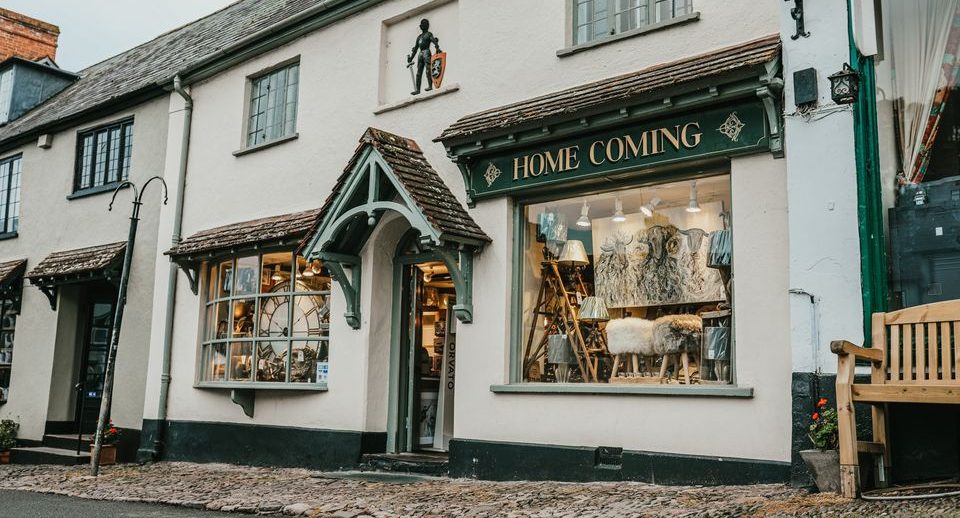
History of Dunster
So given that we keep referring to all this incredible history let’s talk about how it all began.
Many thousands of years ago (yes, literally thousands!), hill forts were built and inhabited within a short distance of Dunster. Remnants of these iron-age dwellings are still present today; take a hike to the top of the hill to the south of the village and see them for yourself (and admire the incredible views!)
However, this is not the root of Dunster as we know it today, so let’s talk more about that…
Around 700 AD, the Saxons established the original settlement (initially known as ‘Torre’ with the prefix ‘Duns’ added a little later).
Shortly following this (and at least before 1086, as testified by the Doomsday Book!), the Norman warrior, ‘Willam de Mohun,’ built Dunster Castle. Originally a motte and bailey timber Castle, this has gone through various re-designs and makeovers over the centuries. Acquired by the Luttrell family in 1376, they continued to reside there for some 600 years. Now that’s some impressive family inheritance! The Castle no doubt contributed to the bustle and vibrancy of Dunster over the years, as it continues to do so to this day.

Besides the Castle, Dunster also became famous for its flourishing wool trade. Initially yarn and fibres, later dyes and cloths, these helped Dunster proper by the early 13th century. Of course, as mentioned previously, the remarkable Yarn Market stands hommage to these times.
Other incredible buildings and structures include those of the Benedictine Dunster Priory, established around 1100. The Priory Church of St George, Dovecote, and Tithe Barn are all components that remain today in the center of the village.
Dunster Beach
Follow the road out of Dunster towards the sea, and you will cross under the A39 into Dunster Marsh. Dunster Beach lies beyond this. A large expanse of sand and shingle, the beach looks out over the Bristol channel to the Welsh shoreline. In around 30 minutes, you can walk along the beach to Minehead – pass Minehead Golf Course on your left.
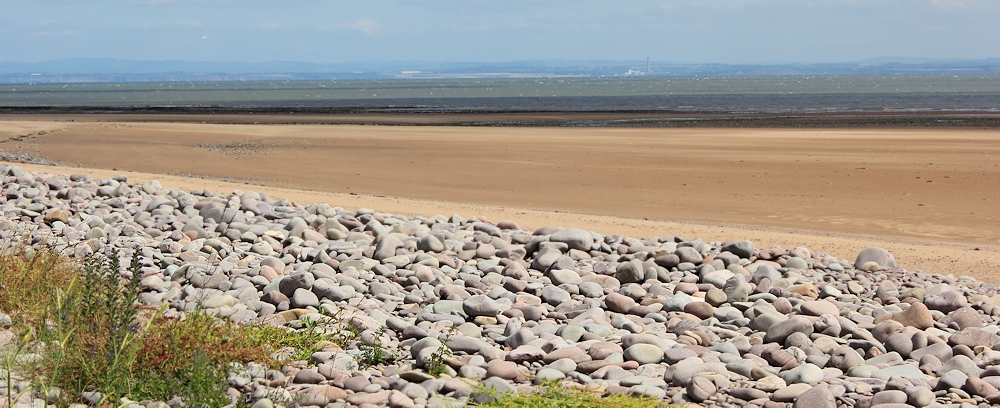
Map of Dunster
Here’s a handy map of Dunster and the surrounding hills.
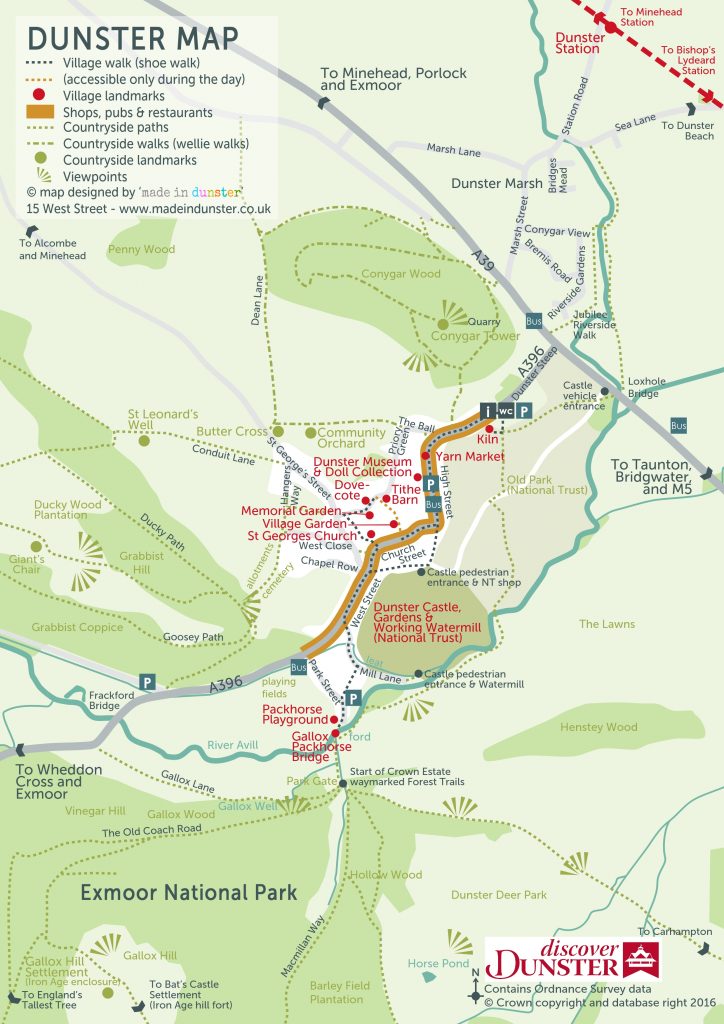
Self Catering Accommodation in Dunster
After all of that, you may well be on the hunt to find somewhere to come and stay so you can explore all of Dunster’s delights yourself! If you are looking for somewhere to stay right in the heart of the village, these cottages below are within an easy walk to the center.
Ready to explore Dunster for yourself? Stay in the heart of the village with one of our handpicked cottages — perfect for walking, dining, and discovering Exmoor.
What is Dunster famous for?
Dunster is best known for its medieval history, Dunster Castle, the Yarn Market, and its beautifully preserved high street lined with historic buildings.
Yes, Dunster Castle is run by the National Trust and open to the public. Visitors can explore the historic rooms, gardens, and enjoy views over Exmoor and the Bristol Channel.
Dunster offers plenty of walking options, from short strolls around Gallox Bridge and the Deer Park to longer hikes up Grabbist Hill or along the coast to Minehead.
The village is full of cafés, pubs, and restaurants. Popular spots include Reeves for fine dining, the Luttrell Arms for pub classics, and Locks Tea Room for a cream tea.
Dunster hosts several popular events each year. The Dunster Winter Festival (formerly Dunster by Candlelight) lights up the village each December with festive stalls, music, and entertainment. Summer highlights include the Dunster Show, a traditional agricultural fair, and the Dunster Fair, celebrating local heritage. There’s also the Dunster Festival, which brings music and the arts to historic venues around the village.
There are plenty of cosy self-catering cottages in and around Dunster. Options range from romantic retreats for two to larger family homes close to the castle and high street.
